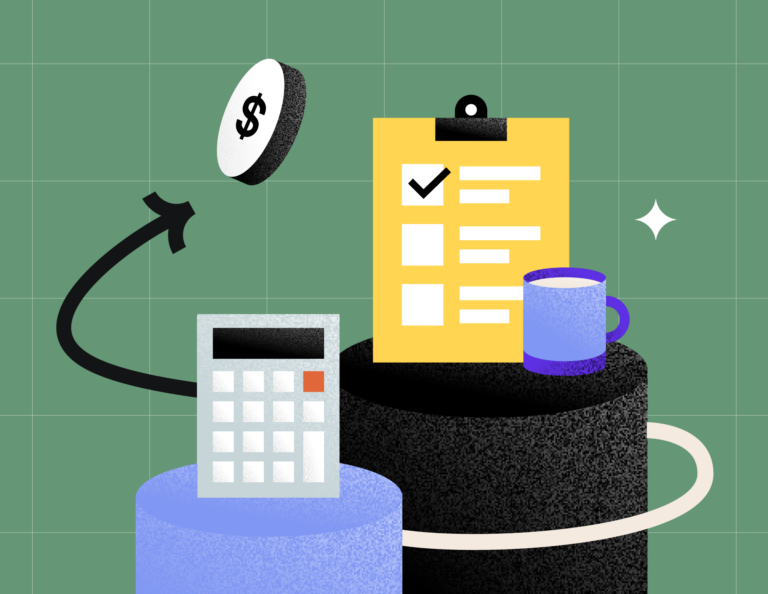Competitive pricing can take a lot of the mystery out of pricing your services. By looking at what our businesses in your industry and market are charging, you can set prices that are more accurate and appealing to clients.

As an independent business owner, you can’t afford to go wrong with your pricing. It helps clients decide whether they want to invest the time and effort to work with you. It can also determine whether you’re generating profit after you’ve covered all your operating expenses.
But pricing is often one of the biggest mysteries for business owners. Even once you’ve calculated your costs and desired salary, how do you know what your goal profit margin should be?
In this article, we’ll cover one specific pricing model that’s especially relevant for small businesses — competitive pricing. Using this model, you can use your industry peers as a benchmark to make it easier to price your services.
Jump to:
- How does competitive pricing work?
- When to use a competitive pricing model
- Should you go high, or should you go low?
- What are the disadvantages of competitive pricing?
- Critical factors you should price for
- How to make it easy for clients to pay you

Offer multiple payment options with HoneyBook and get paid directly through your invoices.
How does competitive pricing work?
A competitive pricing model, also known as competitor-based pricing, uses your competitors’ prices to define your business’s ideal price points.
When using this pricing strategy, you should research how your competitors are pricing services that are similar to yours. This will give you a sense of the “going rates” in the market. To run a competitive price analysis, it’s as easy as browsing through different businesses’ websites and asking for quotes.
Based on what you discover, you may decide to:
- Price your services higher – You aren’t capturing the quality of clients that you’d like, and it turns out your competitors are pricing higher for similar services. Following competition-based pricing, you can raise your prices to capture higher quality clients.
- Price them lower – If you don’t have any market share yet with your business, you might consider pricing your services lower so you can gain more interest. Or, if you see a lot of churn as you’re generating leads and nurturing them, it may be a sign that your prices are too high.
- Make no changes to your pricing – You might find that your prices are just right based on your competition, needs, and clients. If so, you can explore other competitive pricing strategies to stay on top, such as offering price matching.
When to use a competitive pricing model
A competitive pricing model can help you if your niche and market include many other small businesses providing similar services to yours. Your business is more likely to succeed if your pricing models are similar to what’s already working well in the market.
Competitive pricing models are also helpful for independents trying to enter a competitive market. If you want to quickly grow your client base, you can set your price lower than your competitors. However, you should take this approach with caution and consider your goal profit margin and reputation first.
You can always use a competitive strategy with other pricing strategy examples as well–you don’t always have to pick one or another.
Pro tip: If you’re just starting your business, start with penetration pricing, which means you’ll strategically set your prices lower so that you’re a bit more desirable and can gain market share. After you have some clients, you can then leverage cost-plus pricing, which means you’re accounting for all your costs, then adding a set percentage to ensure you’re marking a profit.
Should you go high, or should you go low?
When you’re deciding how to set your prices with a competitor-based pricing strategy, you might still wonder if you should go slightly higher or lower than the others in your market.
You might think that a slightly lower price is the clear way to go. But before offering your services at a lower price, think about the potential signals that potential clients may get from this:
- A client might think your service is a good deal because of how much they’re getting at a low price. However, low pricing for a small business can also imply low-quality or “basic” services.
- Low pricing may indicate that you’re a novice or don’t have the same level of experience as your competitors.
The common denominator in all of the above scenarios is that clients may not see your value. If you’re selling a top-notch service, you want to ensure you’re being paid what you’re worth.
You should also consider how much it costs to run and maintain your business. If you price too low, your business model isn’t sustainable. Regardless of the pricing method you choose, you should always be able to cover your cost of production at a bare minimum.
On the other hand, raising your prices too high could mean you’ll risk losing clients. The only time you should be looking at high or premium pricing is if your service is unique to the market or if you have exclusive offerings that nobody else in the market can provide. This would warrant a luxury pricing strategy.
What are the disadvantages of competitive pricing?
Like any other pricing strategy, competitive pricing can make you too narrow-minded in your approach to selling your services. Keep in mind that pricing is just one piece of the puzzle. It doesn’t necessarily matter what other businesses are charging if you haven’t yet invested in your talent, services, and client experience.
So, before you analyze other businesses in your industry, make sure your business is at a good place first.
Once you set your pricing through competitive analysis, you might also feel like the clients will line up immediately, but that isn’t necessarily the case. Don’t forget to pay attention to your marketing strategy as well so that your audience knows why you offer a great service and value.
Critical factors you should price for
While price is important, you shouldn’t look at pricing alone as a way to stand out. Clients often look at a combination of value and convenience in addition to the price when they’re choosing services.
When you research your competitors, evaluate what they’re offering for their prices. Ask yourself what you can do to bring more value for the same price or provide more convenience for the client.
Your value
Your value is determined by the customer’s perceived benefits they’re getting from you in relation to what they’re paying for your service. It involves the following:
- The quality of your service
- The customer service experience
- What you’re offering versus what your competitors are offering for the same price
- Your brand impression
As an independent business owner, you offer a personalized experience. Building strong relationships with your clients is critical to your value, and ultimately, getting repeat business deals and referrals to new clients. That’s why you should focus on providing a service that wows your clients and makes them feel you’ve gone above and beyond your competitors.
Talk to satisfied, long-term clients to find out why they prefer to work over your competitors. If they think you’re a superstar when it comes to delivering a great experience, you’ll want to incorporate this into how you calculate your optimal pricing and market yourself.
Your convenience
75% of clients do not think twice about switching over to another brand if they are more convenient to work with. If a client has to submit a lot of manual paperwork or send multiple emails to hear back from a business, they are likely thinking of finding a new business relationship.
To assess your business’s convenience, walk through the client journey yourself, from sending an inquiry to final delivery. Also, look at reviews from previous clients to identify what they didn’t enjoy about working with you.
Other important aspects to consider are speed and access. How quickly can you move the client through your service process, and how easy is it for them to understand how much you charge? How easy is it for the client to gain access to you, especially in an emergency?
Pro tip: Optimizing your entire clientflow is key to offering value and convenience. When the process of researching your services, booking, and moving forward with a project is seamless, you’ll create a better client experience and brand reputation.
How to make it easy for clients to pay you
One of the best ways to leverage your pricing strategy is by using HoneyBook’s clientflow management platform. With HoneyBook, you can easily create interactive, dynamic pricing guides to send to your clients online. Clients can review your services, select the services they want, and pay online in a single step.
HoneyBook’s features are also fully customizable, so you can apply your branding throughout. It gives you the best option for showcasing your pricing and moving forward with booking, all in a seamless, branded experience.

Process client payments quickly and securely with some of the lowest fees in the industry.



